You're using an outdated browser. Please upgrade to a modern browser for the best experience.
Please note this is a comparison between Version 1 by Rodrigo Miani and Version 2 by Rita Xu.
The residential environment is constantly evolving technologically. With this evolution, sensors have become intelligent interconnecting home appliances, personal computers, and mobile devices. Despite the benefits of this interaction, these devices are also prone to security threats and vulnerabilities. Ensuring the security of smart homes is challenging due to the heterogeneity of applications and protocols involved in this environment. This entry proposes the FamilyGuard architecture to add a new layer of security and simplify management of the home environment by detecting network traffic anomalies.
- machine learning
- anomaly detection
- network security
1. Introduction
The accelerated growth of applications and devices for the Internet of things (IoT) means excellent amenities for people in diverse areas, such as smart homes, industrial automation, healthcare, electricity control, cities, and smart grids [1]. However, deploying IoT applications in different scenarios can also introduce security threats. An example is the Mirai botnet, first identified in August 2016 by a security research group called MalwareMustDie. Mirai scours the Web for smart home devices that have default usernames and passwords and then enlists the devices in attacks that hurl junk traffic at an online target [2].
IoT security is also affected by software and hardware constraints on such devices. For example, implementing encryption and authentication mechanisms on these devices can be challenging [3]. Another problem is that IoT applications might rely on users’ personal information to provide services. However, collecting, transferring, and using this information increases the risk of damaging users’ privacy [4][5][4,5]. Thus, one of the most prominent research challenges for the networking and security community is providing a cost-effective balance between the use of sensitive data and privacy [6].
There are several types of non-standard IoT devices and protocols in smart home scenarios whose lack of standardization can pose security risks to this environment. For example, the owner of cameras, TVs, and smart sensors must manage the security updates individually, even if they do not have the time or the knowledge to deal with this situation. Moreover, without proper threat monitoring, infected mobiles devices might compromise the smart home environment as they ingress into the home network.
Several works propose using SDN to create a safer environment for smart homes [7][8][9][7,8,9]. When dealing with security solutions for smart homes, rwesearchers should consider several challenges when deploying the solution in the environment: heterogeneity of devices and protocols and resource constraints such as small memory, low power consumption, and low computing power. Based on these security challenges, several researchers pursue solutions that include privacy-based, risk-based, and role-based approaches [10][11][12][10,11,12].
The scientific community offers advances in the security of smart home networks [7][8][9][10][11][12][7,8,9,10,11,12]. However, most solutions do not show how security mechanisms could be deployed to operate in the residential environment. Therefore, there still exist research gaps in security requirements for smart home networks consisting of device authentication, network monitoring, secure session key management, physical protection, information security, and user authentication [13][14][13,14]. Another limitation identified in the state of the art is about solutions that detect anomalies. Usually, they do not present the complete structure of the solution; in other words, it is unclear how network traffic would be captured and classified.
Therefore, this work presents FamilyGuard, an architecture that provides a way to define and deploy mechanisms that meet the security requirements of a smart home environment. FamilyGuard uses the SDN paradigm to analyze and manage home area network (HAN) flows, providing flexibility when dealing with security issues, such as traffic monitoring to identify and mitigate threats. The architecture uses machine learning (ML) algorithms to identify anomalous behavior based on network traffic to provide additional protection to residential environments in terms of information security. TheOur idea is that the proposed architecture would help transform the static residential environment into a dynamic one. In other words, FamilyGuard will provide means to deal with changes in the environment and respond to threats.
2. Background
2.1. Smart Home Concepts
A smart home can be defined based on two perspectives. The first perspective considers a house equipped with Information and Communication Technology (ICT) and with connected devices that can be remotely monitored and controlled to meet the needs of residents. In the second perspective, smart homes and other related buildings are seen as elements of flexibly and interactively connected energy systems on a broader scale. These two perspectives are useful for the families themselves and the electrical system as a whole [15]. In the home environment, “intelligence” can integrate electrical devices and services (e.g., heating, lighting, security, photovoltaic generation, electric vehicle charging) that the occupants or other agents remotely control. In addition, sensors and processors can also obtain and apply knowledge about a house, operating independently of direct human action. Together, intelligent or smart household electrical devices have the potential to help manage the network and promote system efficiency, helping to reduce peak demand and match demand with supply in real time. This assists the integration of more distributed renewable generation into electrical systems [16]. There are questions about what technologies are needed at what times to qualify a home as smart. Smart TVs or smartphones, for example, can be classified as smart devices since they allow communication between the house and the outside world. ReIn this searcherstudy, we consider that a high level of device connectivity inside and outside the residential environment, together with the reliance on this connectivity for daily activities, is relevant to whether a home can be named “smart”. The definition presented here is associated with physical and operational factors and assumes that the functionalities are beyond the typical limits of a traditional house [17]. A smart home is a communication network that connects sensors, appliances, controls, and other devices to enable remote monitoring and control by occupants and others to provide frequent services to residents and the electrical system. Therefore, rwesearchers can say that this concept is closely linked to the term Internet of things (IoT) because smart homes provide facilities for the occupants of the residential environment and interconnect objects and sensors.2.2. Internet of Things (IoT)
The term Internet of things (IoT) refers to the network interconnection of objects (sensors, actuators, devices, etc.), which allows sharing of data and information to accomplish some task [18]. The term was also defined in the Recommendation ITU-T Y.2060 (June 2012) as “a global infrastructure for the information society, enabling advanced services by interconnecting (physical and virtual) things based on existing and evolving interoperable information and communication technologies” [19]. The advancement of IoT applications and devices is providing progress in many areas, each of them with different requirements and goals [1]. The smart home, for example, aims to provide greater convenience for people, the smart grid seeks to obtain higher efficiency, reliability, and sustainability in energy systems, and smart-agro offers solutions to improve productivity in agriculture. As the objectives of these areas are entirely different, the security mechanisms employed in these environments need to be adapted to their needs. This work seeks to contribute to the domain of smart homes where there are several challenges, such as interoperability, context-aware middleware, energy-aware/efficient consumption, and security [20]. Since the devices are interconnected using different network standards [21] (Zwave, Insteon, Bluetooth, Zigbee, Ethernet, Wifi), they can be targeted by several types of attackers, from cyber terrorists to script kiddies. Furthermore, smart homes are usually operated by non-expert users in the security of information [22]. Therefore, it is important that the solution involves a high level of automation at the lowest possible cost.2.3. IoT Security Issues
Smart home environments are full of personal information handled by devices, protocols, and services to provide user convenience. Due to the sensitivity of private information, security requirements become more and more necessary in such a scenario. However, managing security controls in these heterogeneous environments is a significant challenge. According to Bugeja et al. [23], security issues can be divided into three different layers of the generic IoT architecture:-
Device Issues: devices in IoT scenarios have performance constraints such as CPUs with low clock rates, low memory, and low throughput. These hardware limitations make it difficult to implement security mechanisms, such as encryption, which are computationally consuming. Many devices do not have a management interface, making it difficult to create security mechanisms such as authentication. For this reason, users need to trust websites or smartphones to manage their devices and information. Another critical issue is that objects in a smart home are physically accessible and may be subject to physical attacks such as tampering by a visitor in the home or even by the household to reduce the charge for some service that relies on smart meters [23].
-
Communication Issues: to interconnect many different devices in a smart home, multiple bridges, hubs, or gateways and many communication protocols are required, which makes it difficult to implement adequate security mechanisms. The smart home environment is highly dynamic, where a device can join or leave the network at any time, reinforcing the idea of developing resilient security mechanisms that can handle asset management. A large number of existing protocols and the restricted capabilities of each device make traditional security mechanisms unsuitable for the smart home environment [21].
-
Service Issues: to reduce the number of vulnerabilities, patch fixes need to be installed periodically. However, performing this process on all devices could be problematic since the firmware of these devices and protocols may not support these security updates dynamically [23].
2.4. Software Defined Networking (SDN)
With SDN [28], networks became programmable, making it possible to virtualize network functions and manage services and applications through logically centralized platforms. SDN introduces control plane and data plane separation. One of the main goals of this separation is creating an agile and flexible network that is capable of handling rapid changes, supporting some requirements of IoT environments that traditional networks may not be able to provide [5]. The SDN controller is responsible for managing the entire network, while switches are responsible for operating the data plane based on the settings specified by the controller [29]. The Southbound API is offered by the OpenFlow protocol, and its assignment is to enable communication between the SDN controller (control plane) and network switches (data plane), thus allowing the controller to define the network flows and the API Northbound interface between the controller and higher layer applications or programs. The SDN is materialized through the OpenFlow protocol [30] and has a set of specifications maintained by the Open Networking Foundation (ONF) [31].3. FamilyGuard
FamilyGuard is a security architecture designed for smart homes equipped with different types of computing devices. The main goal of FamilyGuard is to anticipate and respond to the needs of residents, working to promote their comfort, convenience, safety, and entertainment. According to [32][42], home environments lack reliable security solutions since households occasionally only have antivirus software installed on computers and rarely have perimeter defenses installed on their networks such as an intrusion detection system (IDS) or a firewall. Besides, theour systematic literature survey presented in SectionSection 3 3 showed that proposed solutions only focus on IoT devices and ignore the other communication devices present in the HAN. TheOur solution serves the entire residential environment, detecting threats in IoT and mobile and traditional devices, such as computers and laptops. Figure 1 presents a high-level view of the architecture. Security service providers (SSPs) are responsible for providing management and configuration features that help protect existing information on a home area network (HAN), such as machine learning (ML) models to identify anomalies in network behavior. The user can access the services provided by SSPs through an application on their mobile device and hire a Security-as-a-Service (SECaaS) that meets their needs. HANs can send information and alerts to SPPs if they identify anomalous situations in the network. In this way, by managing multiple households, an SPP can work collaboratively to detect threats.
Figure 1. High level architecture. The user can access some of the security services provided by SSPs using mobile devices.
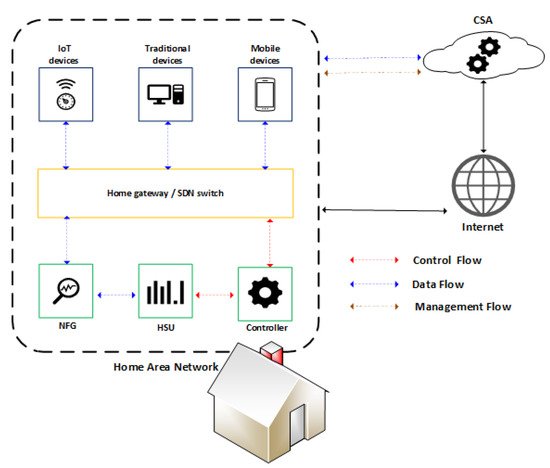
Figure 2. Communication between the architecture components.
3.1. Home Surveillance Unit (HSU)
The HSU is responsible for receiving flows from the network, performing traffic analysis tasks, and managing the network through the controller interface. The HSU uses a workflow to handle incoming network traffic flows and perform analysis. A workflow can contain multiple artificial intelligence models to handle flows and perform analysis sequentially. For example, the HSU receives a flow and forwards it to Workflow A, which initially prepares the flow by removing unnecessary characteristics; another model identifies the traffic type of the flow and forwards it to the last model to verify if the flow has anomalous behavior. The structure HSU has two main components: the Security Orchestrator and the AI Workflow Orchestrator, shown in Figure 3 and described below: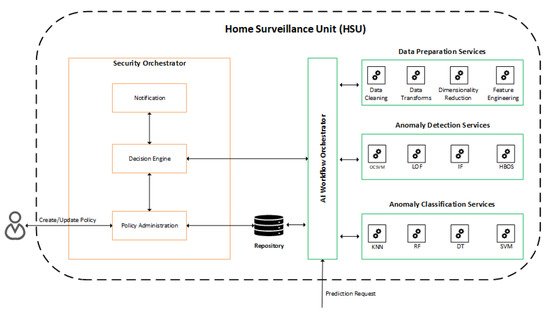
Figure 3. Communication between the services present in the HSU.
-
Security Orchestrator (SECOR): is responsible for managing, configuring, and providing notification information related to security policies applied in HAN. Upon receiving the result of a prediction from the AI Workflow Orchestrator, the decision engine checks the applicable security policies to defeat or mitigate the detected threat and then notifies the controller so that the change in the flow table is performed to block or limit access to the device on which the threat was detected. The user can also change the security policies, being able to choose to either block the infected device immediately or be notified and make the blocking decision later.
-
AI Workflow Orchestrator (AIWO): in charge of receiving prediction requests and generating results for the Security Orchestrator, being also responsible for managing and administering services available for predictions, categorized as Data Preparation Services, Anomaly Detection Services, and Services of Anomaly Classification.
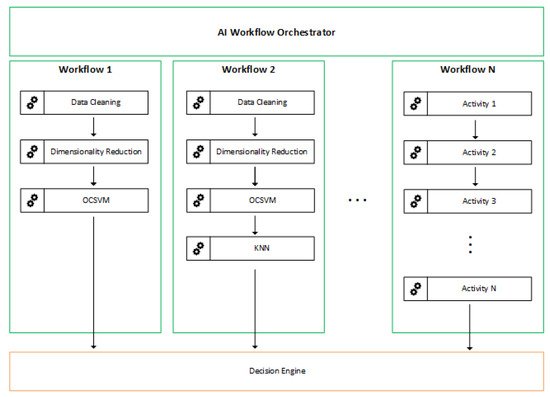
Figure 4. Workflow Orchestrator is responsible for managing several workflows.
3.2. Controller
The SDN controller is installed in a computing device responsible for receiving the HSU instructions and relaying them to the home switch (HS), where all devices in the home must be connected using wired or wireless connections. The approach used in this work was to deploy the HSU and the controller on the same device. The main advantage of running the HSU with the controller was maintaining a simple deployment scenario in a smart home, avoiding using another device to execute the HSU instructions. Performance is another aspect that motivated this decision, as the exchange of messages between the controller and the HSU is faster when they are on the same device. Using an SDN controller in the scope of a residential environment could bring several advantages such as greater agility, more programmability, centralized data control, simplified operations, and better management of network resources. The HSU, for example, can send a blocking rule to the controller when it identifies a threat. In this way, the HSU takes advantage of the dynamism provided by the use of the controller to actively act on the network to mitigate threats that could harm users’ privacy. Despite its benefits, adding an SDN controller in a residential scenario might not be a simple task for a user. However, for the scenario involving smart homes, a small device with low cost and good computing power can meet this need. The ISP or SSP can also provide an SDN-based device when offering such a solution for home users. The potential complexity for end users in dealing with an SDN controller is eliminated by adopting the FamilyGuard architecture, which performs all the management (communication) of the controller and provides APIs for developing web pages or mobile applications to control their devices and information.3.3. Network Flow Generator (NFG)
The NGF component collects traffic that traverses a given network, or network segment, to generate [33][43] network flows. According to RFC 7011, a flow can be defined as a set of IP packets passing an observation point in the network during a specific time interval. Network flows have been used in several network applications ranging from troubleshooting connectivity issues to planning future bandwidth allocation. Here, rwesearchers use network flows to identify and mitigate security issues. Monitoring network flows can provide insights into how a network operates, its overall utilization, application usage, potential bottlenecks, anomalies that can signal security threats, etc. Several different standards and formats are used in monitoring network flows, including NetFlow [34][44], sFlow [35][45], and Internet Protocol Flow Information Export (IPFIX) [36][46]. The adoption of a solution to generate network flows is encouraged by the benefits of detecting anomalous traffic and other threats to network security. The information in the IP packet header provides the basis for generating network flows. The amount of data processed by the flow-based intrusion detection system is less, as it contains summary information. Another factor contributing to the decision to use network flows for analysis is the number of network applications that use end-to-end encryption. Since flow-based inspection only works with statistical features extracted from the packet header, this approach raises fewer privacy concerns than packet-based inspection because user information is protected from any intermediate scans. Despite the benefits, flow-based intrusion detection also has some limitations. For example, the network flows represent a snapshot of summarized network traffic at a specific time. Therefore, it might be more difficult to distinguish some attack types [37][47].3.4. Central Security Assistant (CSA)
The CSA aims to provide services that collaborate with the performance of the activities by the HSUs. The CSA can be provided by Internet Service Providers (ISPs) or by service providers interested in providing an adequate structure for the management of security in residential environments. The flexibility in CSA positioning allows the architecture to be employed in the smart home context and in different IoT environments such as smart grid, healthcare, and others. However, it is necessary to evaluate, among other things, the number of devices deployed on the network and the traffic generated by them to define the hardware resources needed to meet the environment. One of the benefits of installing CSA on an ISP or cloud is the ability to sell security services to customers as models for detecting threats. Figure 5 presents the data flow performed by the CSA, in which the notification process receives notifications provided by the HSU and saves them as notifications in the notification store. The CSA also runs the statistics process, which is responsible for creating metrics based on notifications received by the HSU. In addition to notifications, the CSA maintains the anomaly detection models used by HSUs.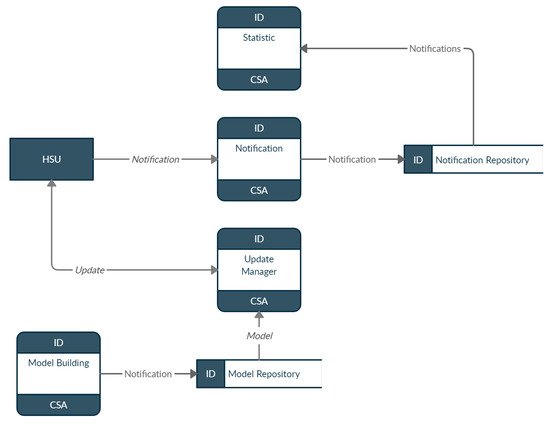
Figure 5. Communication between CSA components.
3.5. FamilyGuard Layers
FamilyGuard is organized into four layers: Device layer, Network layer, Detection layer, and Management layer, depicted in Figure 6. The HSU and SDN controller operate at the Network and Detection layers. The Management layer hosts (i) the CSA, which helps different HSUs to perform their tasks, and (ii) applications, which help to control and configure local services that exist in residential environments. The structures of each layer are described below: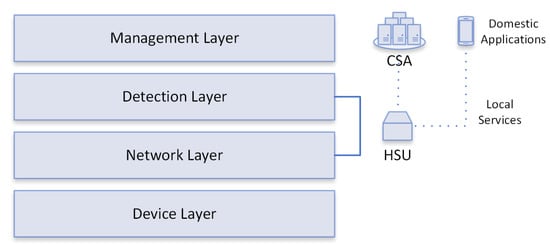
Figure 6. FamilyGuard layers and their relationship with HSU and CSA.
-
Device Layer: represents all devices that can communicate in home environments, including laptops, smartphones, and smart devices such as sensors (temperature and presence) and actuators (light switches). There are several smart devices on the market, created by different manufacturers; therefore, residential environments are heterogeneous and complex for risk and threat management.
-
Network Layer: has the ability to handle multiple protocols and receive/transmit data through the Devices layer, so that data packets are transferred over the data link, such as Wi-Fi, Ethernet, Wireless Sensor Network (WSN), and Machine- to-Machine (M2M).
-
Detection Layer: performs anomaly detection (primary function) through well-defined services, from network traffic reception to notification, for layer management, by classifying a given flow as anomalous.
-
Management Layer: is responsible for monitoring and controlling the settings of the residential environment through CSA and home control apps; the CSA collaborates so that HSUs can perform their functions through services that are essential for the functioning of the environment.
